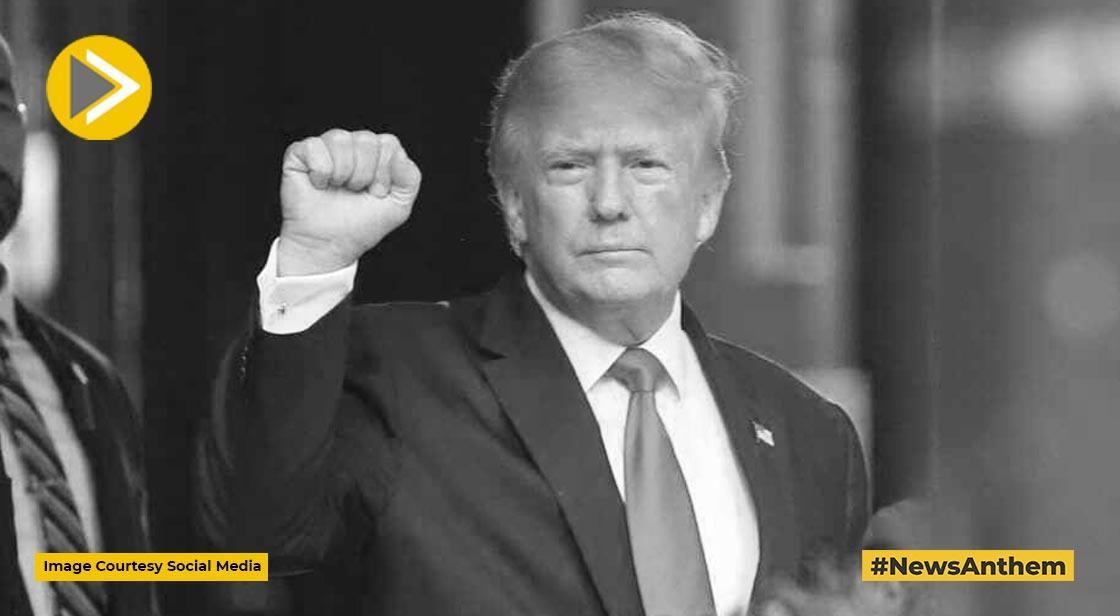India Considers Major Tariff Reductions Amid US Trade Talks

News Synopsis
India is reportedly considering reducing tariffs on over half of US imports worth $23 billion as part of ongoing trade negotiations between the two nations. According to a report, that cites two government sources, this move could be one of the most significant tariff cuts in recent years and is aimed at avoiding potential retaliatory tariffs that could negatively impact Indian exports.
The Indian government is working to mitigate the impact of US President Donald Trump's global reciprocal tariffs, which are scheduled to take effect on April 2.
These tariffs have already caused disruptions in global markets and raised concerns among various countries, including key Western allies of the United States.
Potential Impact of US Tariffs on Indian Exports
As per an internal analysis conducted by the Indian government, the new US tariffs could affect 87% of Indian exports to the US, which currently amount to approximately $66 billion.
To counteract this impact, India is considering lowering tariffs on 55% of US imports, which are currently taxed between 5% and 30%. While some tariff rates may be significantly reduced, others could be removed entirely.
However, Indian officials have yet to reach a final decision. Other options being evaluated include adjusting tariffs selectively for particular sectors rather than implementing a broad tariff cut. Additionally, the government may choose to negotiate tariff reductions for specific products rather than multiple industries.
US Delegation to Visit India for Trade Discussions
A high-level US delegation, led by Brendan Lynch, Assistant US Trade Representative for South and Central Asia, is scheduled to visit India for trade discussions starting Tuesday. The Indian government is working towards finalizing a deal before the US reciprocal tariffs are implemented.
India and the United States have a history of trade negotiations. According to data from the World Trade Organisation (WTO), the average US trade-weighted tariff is 2.2%, while India’s stands at 12%. Additionally, the United States currently maintains a $45.6 billion trade deficit with India.
During Prime Minister Narendra Modi’s US visit in February, both nations agreed to commence early trade deal discussions to resolve outstanding tariff disputes. However, India’s willingness to reduce tariffs depends on the US agreeing to ease its reciprocal tariffs, sources told Reuters.
India’s Stance on Specific Tariffs
Reports indicate that India may cut tariffs on select US agricultural products such as almonds, pistachios, oatmeal, and quinoa. However, India has set clear limits on negotiations and will not reduce tariffs on key agricultural commodities like meat, maize, wheat, and dairy products.
Additionally, tariffs on automobiles, which currently exceed 100%, may be reduced gradually instead of an immediate cut.
Key Indian Industries at Risk Due to US Tariffs
The Indian government is particularly concerned that US reciprocal tariffs will negatively impact major export industries, including:
-
Pharmaceuticals
-
Automobiles
-
Electrical equipment
-
Machinery
According to government sources, tariffs on products such as pearls, mineral fuels, and machinery could see increases between 6% and 10%, potentially impacting half of India's total exports to the US. Should these tariffs rise, US companies might opt for alternative suppliers from countries like Indonesia, Israel, and Vietnam, which could further damage India’s export industry.
India's Firm Stance on Trade Negotiations
Speaking before a parliamentary committee on March 10, Sunil Barthwal, India’s trade secretary, emphasized that while India seeks strong trade relations with the US, it will not compromise on national interests. Reuters, citing two individuals who attended the closed-door meeting, reported this statement.
Meanwhile, US Commerce Secretary Howard Lutnick has urged India to consider broader tariff reductions. His appeal follows India's recent tariff cuts on high-end motorcycles and bourbon whisky earlier this year.
Conclusion
India’s willingness to reduce tariffs on US imports worth $23 billion highlights its strategic approach to avoiding potential trade conflicts while protecting its key industries. The proposed tariff reductions could ease diplomatic tensions and pave the way for improved economic cooperation. However, India's commitment to maintaining trade sovereignty ensures that certain critical industries will remain shielded from tariff cuts.
With high-level trade talks set to begin, the outcome of these negotiations will significantly shape the future of Indo-US trade relations. As discussions progress, both nations will need to strike a balanced deal that supports mutual economic growth while addressing industry-specific concerns.
You May Like









